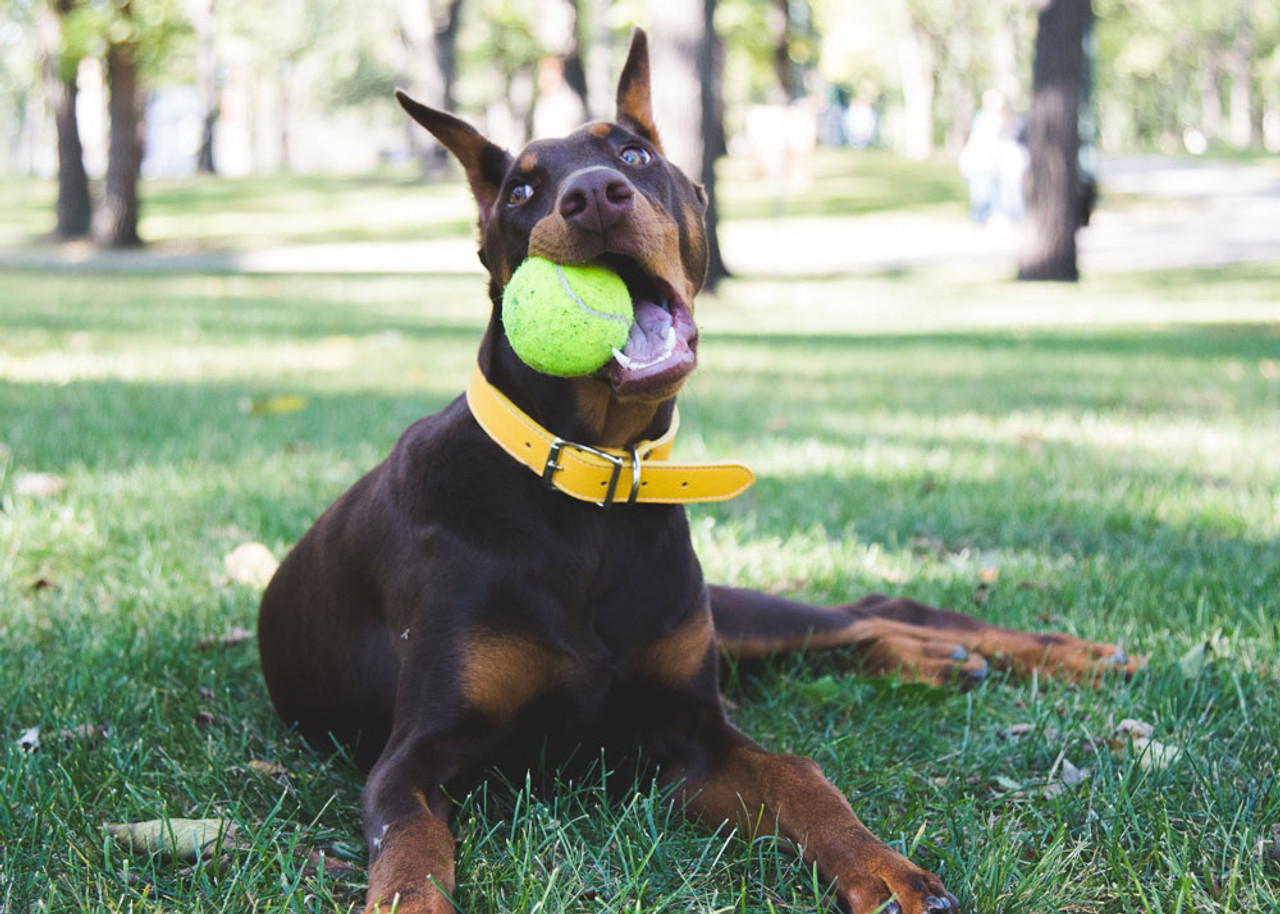Have you met the dogIDs spokesdog, River? One of his favorite sports is fetch. If there were a professional fetching team, River would be captain.
Playing fetch can be a great form of exercise for a dog, but it can also give the dog a mental workout if there are a few "rules." Adding rules to a simple game is a great way to build a dog's self control. While we want our dogs to have fun, it's also important that they learn not to grab the ball from our hands or to bark at us to throw the ball sooner. Let's get to some examples:
The Rules of Fetch
Teach your dog to wait in the doorway.
If you have one of those "ball nuts" you know how rude it is when you're trying to head outside to play and the dog just barges right by, practically knocking you over.
Teach your dog to sit at your side and to "stay" or "wait" until he is released. Walk through the door ahead of your dog, and then use a command such as "OK!" to release him. You may need to practice several times without your dog's favorite ball in sight, depending on his level of obedience. Some dogs get a bit obsessive and "forget" everything if there is a ball involved. Be patient, and practice in short sessions over several days.
Teach your dog to wait while you throw the ball.
You should also work on teaching your dog to "wait" or "stay" while you throw the ball, especially if you have a pushy dog that tries to jump up and grab it.
Sitting and staying while a ball is thrown is a huge challenge for a lot of dogs, and learning this skill will help them improve their sit/stay skills in other situations. Sitting patiently while you throw the ball will also help the dog keep his eye on the ball since he will watch you throw it.
To practice this skill, you may need a helper. Put the dog on a leash, tell him to stay, and then step on the leash or have someone throw the ball while you hold the leash. You may want to wear gloves to prevent rope burn, and your dog should wear a buckle collar or perhaps a dog harness so he doesn't hurt his neck.
When the ball is thrown, your dog will most likely break from the sit position. Simply tell him "no" and put him back into a sit. Once he's sitting calmly for a second or two, release him to retrieve the ball. The goal should be to eventually get your dog to sit and stay while you throw the ball even without a leash.
Teach the dog a command for "drop."
Some dogs are tempted to hold onto the ball once they bring it back, initiating a game of chase. To get your dog to drop the ball quickly, try using some highly valued treats and reward him when he does drop the ball. It will have to be something he likes even better than a tennis ball, so maybe hot dog bits or real chicken. Keep the leash on your dog if necessary for added control.
Use a command to signal play is over.
Some dogs are so nuts about playing fetch that they don't know their limits. They may continue bringing the ball back until they are injured or overheated. Even if the dog is not overly tired, the game should still end on the human's terms. Use a signal such as "that's enough" to tell your dog the game has ended. Then, completely ignore the dog. Do not acknowledge him if he stares obsessively at the ball or if he keeps bringing you the ball. Don't even scold him. If necessary, without saying anything and without looking at your dog, simply pick the ball up and put it away.
How about you? Do you have a "ball nut?"
You may want to check out the tennis ball tag for dogs in honor of your dog's obsession.

